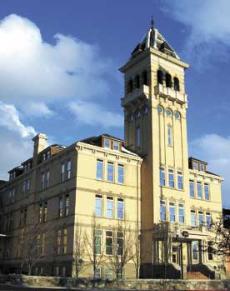Tuition increased; 8 percent jump will cost students $246 more per semester
Students will have to dig a little deeper into their pockets next year due to an 8 percent increase in tuition costs.
The increase in Tier-I tuition, which is set by the state, will be 4 percent for all schools in Utah next year. The Tier-II increase, which is set by Utah State University administration, will also be 4 percent. The money from the increase in Tier I will go to faculty salaries, said Amanda Covington, director of communication for the Utah System of Higher Education. What will be done with the money from the Tier-II increase will be determined by the university.
The rise in tuition means a $246 increase for students. For USU, the exact amount of money brought in is yet to be determined.
How much money is generated by the increase will be determined by how many students will be attending next year. While this number can’t be predicted exactly, Juan Franco, vice president for Student Services, said the figures for fall semester 2006 are “looking positive.” One guess puts enrollment increase at just under 3 percent, which would generate about $2,440,000. However, this is just an estimate.
There are several categories that have been proposed to receive money from USU’s Tier-II increase. The majority of the money will go to reduce USU’s deficit. Other categories are enrollment initiatives, student initiatives, faculty and staff salaries and to hire faculty in “high-demand areas.”
Some student initiatives being considered are improving classrooms, creating a memorial for the College of Agriculture students killed in the van accident in September and increasing the hours of operation of the Taggart Student Center computer lab. Others are establishing a student-run radio station, subscribing to library journals and providing support to both undergraduate and graduate students. Student support would be the largest category, taking up an estimated $100,000.
How much tuition should go up and where the money will go was discussed at a public hearing before spring break. Franco said students at the hearing seemed understanding of the need to increase tuition. He said the increase was “not arbitrary,” but “well though out.
“The things that are being funded are essential,” he said. “It’s not fluff. It’s stuff we need.”
USU’s increase was among the lowest in the state. The average was an increase of 10.6 percent. All schools were required to increase by 4 percent, but Tier II is controlled by individual school administrations and may vary. Tuition at the University of Utah will increase by 9.5 percent, while Dixie State College will increase tuition by 31.3 percent for undergrads and decrease it by 10.7 percent for grad students. The only school that did not increase Tier-II tuition was Salt Lake Community College.
Covington said a 3.5 percent increase in salary for college professors was approved by the state and the 4 percent increase in Tier-I tuition will go to help pay for that. She said since college professors in Utah are paid less than the national average, it’s difficult to retain them.
“It’s difficult for Utah State and the University of Utah – both research universities – to keep well-trained professors on campus,” she said.
Franco said some areas of academia must pay professors more than others, so he did not know how many new faculty members the proposed $250,000 for faculty hiring would afford.
“No one wants to increase tuition, but we need to cover expenses and we felt this was a reasonable amount,” he said. “Central administration, including the president, is trying to keep tuition down.”
Franco said despite the increase, USU continues to be a good educational value because other schools had to raise their tuition as well.
-ella@cc.usu.edu

